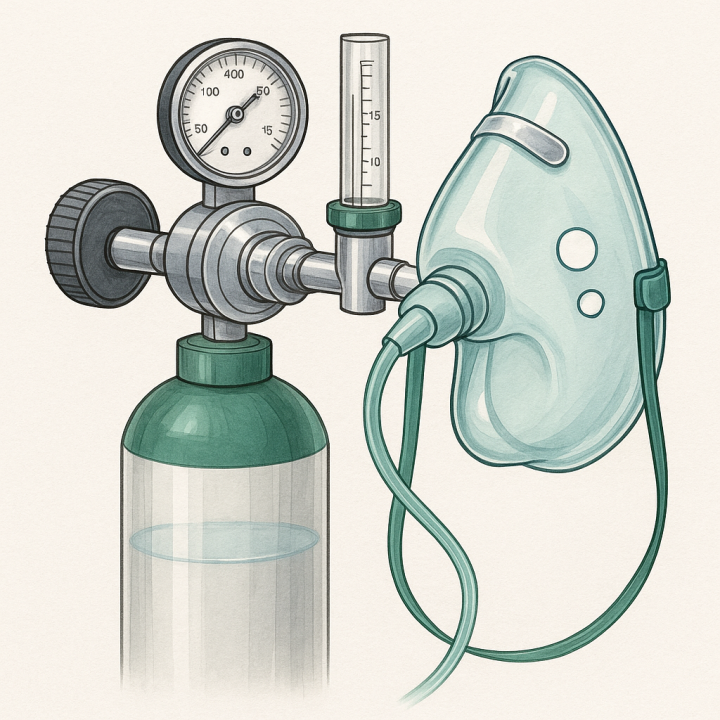In the moments following a cardiac arrest, every second counts—and so does every breath. Oxygen plays a critical role in resuscitation efforts, but understanding how and when to administer it is key to improving outcomes.
Why Oxygen Matters in Cardiac Arrest
During cardiac arrest, the heart stops pumping effectively, and oxygen delivery to vital organs—especially the brain—ceases. Without oxygen, brain cells begin to die within minutes. Restoring oxygenation is a foundational goal of advanced cardiac life support (ACLS).
Key Phases of Oxygen Use
1. Immediate Resuscitation (Pre-ROSC)
In the early stages of CPR, high-concentration oxygen is typically delivered via bag-mask ventilation. This helps maximize oxygen saturation during chest compressions. However, ventilation should be controlled to avoid hyperventilation, which can reduce coronary perfusion pressure.
2. Post-Resuscitation (Post-ROSC)
Once return of spontaneous circulation (ROSC) is achieved, oxygen therapy becomes more nuanced. Studies have shown that both hypoxia and hyperoxia can be harmful. Guidelines now recommend titrating oxygen to maintain an SpO₂ of 94–99%.
Common Oxygen Delivery Devices
- Bag-Valve Mask (BVM): Used during active resuscitation.
- Non-Rebreather Mask: Common post-ROSC device for high-flow oxygen.
- Nasal Cannula or Venturi Mask: Used for more controlled oxygen delivery during recovery.
The Danger of Too Much Oxygen
Excessive oxygen (hyperoxia) after ROSC has been linked to increased oxidative stress and worsened neurological outcomes. This has led to more conservative oxygen strategies post-resuscitation.
Practical Tips for Providers
- Use 100% oxygen during CPR but reduce it after ROSC.
- Continuously monitor SpO₂ and adjust FiO₂ accordingly.
- Be aware of patient-specific conditions (COPD, etc.) that affect oxygen targets.
Final Thoughts
Oxygen is a life-saving tool in cardiac arrest, but its use must be guided by evidence and careful monitoring. As resuscitation science evolves, so does our understanding of how to use oxygen wisely—for better recovery and long-term outcomes.


